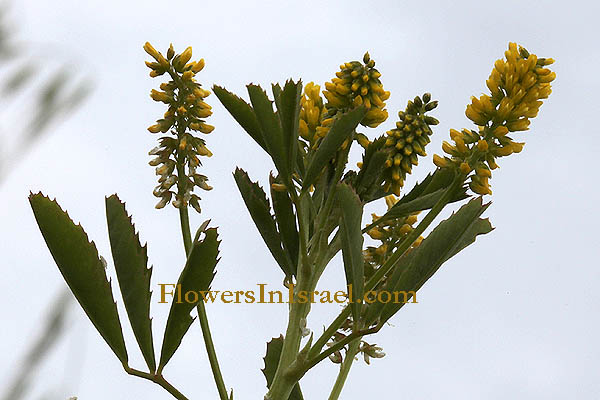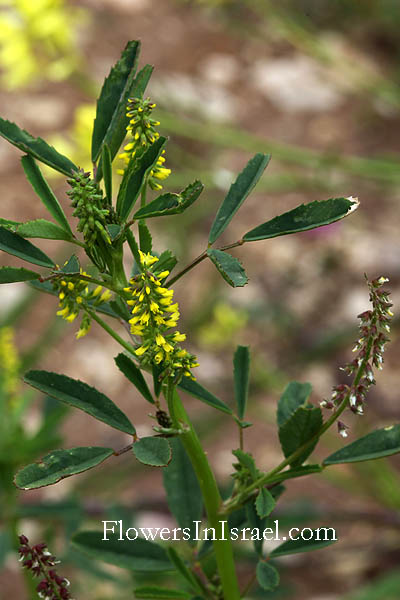Mediterranean sweetclover, Grooved Melilot,
Hebrew: דבשה חרוצה ,דבשה מחורצת, Arabic: حندقوق, نفل
| Scientific name: | Melilotus sulcatus Desf. | |
| Synonym name: | Melilotus compactus Guss. | |
| Common name: | Grooved Melilot, Mediterranean sweetclover | |
| Hebrew name: | דבשה חרוצה, דבשה מחורצת | |
| Arabic name: | حندقوق, نفل "Handaqouq, nafal" | |
| Plant Family: | Papilionaceae, פרפרניים |

Location: Herzliya Winter pool |
| Life form: | Therophyte, annual | |
| Stems: | 20-70 cm high; internodes short, branches numerous, spreading or ascending, the lowermost often very long | |
| Leaves: | Alternate, compound, trifoliolate, dentate or serrate | |
| Inflorescence: | Raceme, 15-50 flowered; peduncle 2-6 cm long; pedicels 1.5-2 mm long | |
| Flowers: | Yellow, 2.5-8 mm long; standard and wings shorter than the keel | |
| Fruits / pods: | Pod 3-5.5 mm long, with 7-17 concentric nerves or ridges; seed 2-3.5 mm long, tuberculate or almost smooth | |
| Flowering Period: | March, April, May | |
| Habitat: | Batha, Phrygana | |
| Distribution: | Mediterranean Woodlands and Shrublands, Semi-steppe shrublands, Shrub-steppes, Deserts and extreme deserts | |
| Chorotype: | Mediterranean | |
| Summer shedding: | Ephemeral |

Location: Herzliya, Winter pool Derivation of the botanical name: Melilotus, Greek meli, honey; lotus, a leguminous plant. sulcatus, furrowed. compactus, compact; dense. The Hebrew name: דבשה, davsha, implies the sweet-smelling odor from the various parts of the plant, as does the popular English name - 'sweetclover'; davsha, divsha from dvash, honey.
|